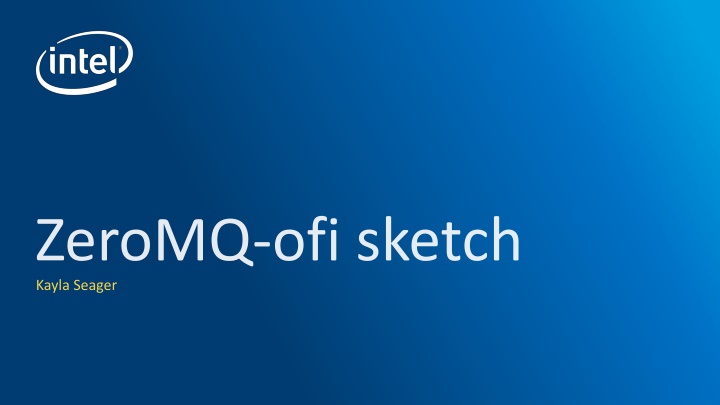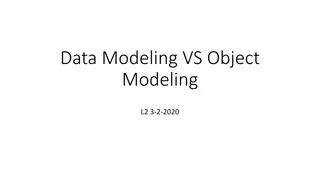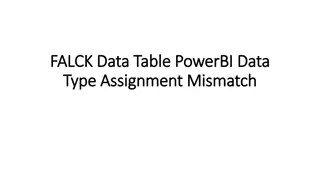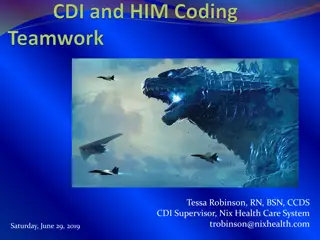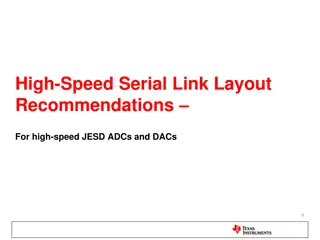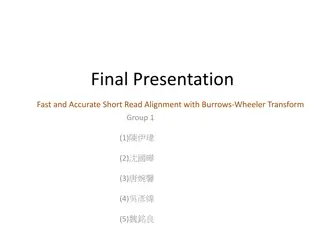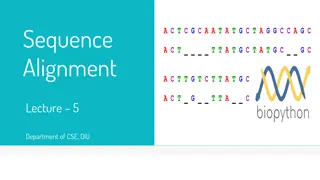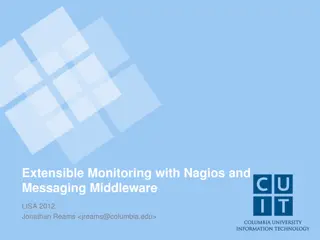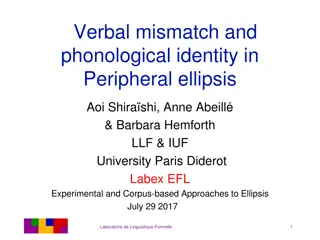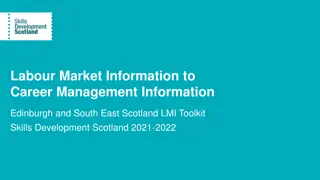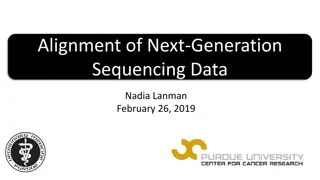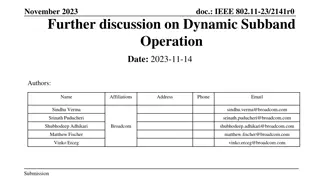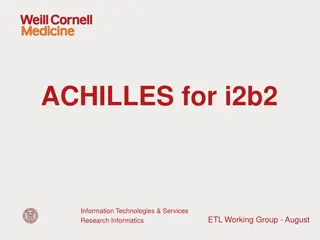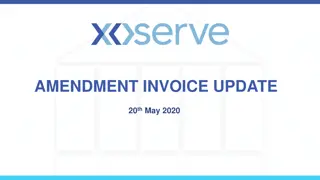Exploring ZeroMQ: Features, Mismatches, and Improvements
ZeroMQ is a popular asynchronous sockets library used in AI and enterprise applications. This discussion delves into its requirements, identifies mismatches between ZeroMQ and Libfabric, and suggests improvements. It explains ZeroMQ's unique features like multiple connections per socket, async communication model, and message-based communication. The examples provided showcase the usage of ZeroMQ and highlight areas for improvement.
Download Presentation

Please find below an Image/Link to download the presentation.
The content on the website is provided AS IS for your information and personal use only. It may not be sold, licensed, or shared on other websites without obtaining consent from the author.If you encounter any issues during the download, it is possible that the publisher has removed the file from their server.
You are allowed to download the files provided on this website for personal or commercial use, subject to the condition that they are used lawfully. All files are the property of their respective owners.
The content on the website is provided AS IS for your information and personal use only. It may not be sold, licensed, or shared on other websites without obtaining consent from the author.
E N D
Presentation Transcript
Purpose of discussion 1. Explore requirements of ZeroMQ ( sockets library ) ZeroMQ: widely used in AI/enterprise 2. Identify Mismatches between ZeroMQ and Libfabric Focus on a commonly used subset of ZMQ API 3. Brainstorm Libfabric improvements 2
Zeromq Asynchronous sockets library with load balancing 3
What is ZeroMQ? Socket-like interface but builds features on top of it 1. Multiple Connections per socket 2. Async communication model: fire and forget 3. Background CM: listen/accept 4. Message-based (vs stream) 5. Some built-in load balancing (defined by socket type) 4
ZMQ Objects & Mapping to OFI ZMQ CTX FI_DOMAIN ZMQ Socket fd ZMQ Socket fd FI_EP Connection fd Connection fd Connection fd Connection fd
Example Code 1) void *context = zmq_ctx() Server: Client: 2) void *rep_sock = 2) void *req_sock = zmq_socket(context, ZMQ_REP) zmq_socket(context, ZMQ_REQ) 3) zmq_bind(rep_sock, tcp://*:4040 ) 3) zmq_connect(req_sock, tcp://localhost:4040 ) 4) zmq_recv(rep_sock, buffer, 6, flag) 4) zmq_send(req_sock, hello , 6, flag) 6
Example Code: Whats missing? Server: Client: No destination address provided! 4 zmq_recv(rep_sock, buffer, 6, flag) zmq_send(req_sock, hello , 6, flag) One socket <--> multiple connections how does it pick the connection? 7
Example Code: Server: Client: zmq_socket(context, ZMQ_REP) zmq_socket(context, ZMQ_REQ) Socket type determines connection selection Learning curve 8
Socket types/Message Patterns Definition: how and when to use connections Example: Request-Reply: (ZMQ_REQ/ZMQ_REP) Load balancing Dealer/Router Pub-Sub: broadcast to all connections Exclusive Pair: only one connection Different sockets with the right type can connect to each other
REQ/REP: synchronous Send/Recv Requires a single REQ and REP socket Synchronous send/recv Will wait for recv from socket it sent to 1 SockAR EP Round Robin load balancing Wait for SockA recv Sock REQ SockBR EP 2
Round Robin Send send one message to each destination in round robin order send msg1 send msg2 send msg3 2 1 3 dest1 dest2 dest3 dest1 dest2 dest3 dest1 dest2 dest3 11
Fair Queue Recv Read one message from each destination in round robin order Recv(msg1, dest1) Recv(msg2, dest2) Recv(msg3, dest3) 1 2 3 MsgQ Dest1 MsgQ Dest2 MsgQ Dest3 12
Dealer/Router Aynchronous (REP/REQ) Round Robin load balancing send and receive! Router: uses ID for connections
Special case: Router and IDs Wait you can set the Destination? (on Router Send only) Dealer/Client: (connection to Router) Can address your connection via ID s can set ID (else ZMQ will set one for you) Router and ID management: Specify Send via connection ID Expects first message to be ID uses it for connection look-up Receive Round robins connections Chosen connection: look-up which ID, First receive is ID, then message
Special case: Router and IDs Client: set ID zmq_setsockopt( client_sock, ZMQ_IDENTITY, ClientA_ID ) zmq_connect( client_sock, Router_address ) 3) zmq_recv(msg_for_ClientA) 4) zmq_send(msg_for_Router) Router Server: 1) zmq_send(ClientA_ID, MORE) 2) zmq_send(msg_for_ClientA) ID is only used at Router Socket layer not transmitted 5) zmq_recv(ClientA_ID) 6) zmq_recv(msg_for_Router)
ZMQ Architecture: Single Socket User s ZMQ socket_fd Front End: Front end Message Pattern Protocol implementation ZMQ_REP/REQ Pipes created per connection Put/recv message on/from queue Control messaging Message Queue Message Queue Signal backend Back end fi_send/fi_recv Back End: Transport/CM Put/recv message on/from queue Signal front end Poll(fds..) CM polling network
Overall ZMQ goal: build systems Make asynchronous sockets easy ZMQ sockets are lego blocks for messaging systems Not constrained to any particular system can do broker or brokerless - 17
Case Study: MXNet-Pslite Model: AI Framework Dealer Dealer Dealer Dealer Dealer Dealer Dealer Dealer Dealer process 1 process 2 ZMQ API usage process 3 Router Router Router Router/Dealer socket type bind bind bind Msg API (send/recv) MORE flag connect connect connect Dealer Dealer Dealer Node 4 Router 18
Related Work note Alice FairMQ - Nanomsg Nanomsg: refactored ZeroMQ Pluggable transports Nanomsg-Libfabric (usNIC target) PR for true Zero-Copy support Can t reuse existing FD based solns 20
Users ZMQ socket_fd ZMQ Architecture Front End: Not a great fit for Libfabric Message Pattern Protocol implementation Pipes created per connection We already have async communication Control messaging Message Queue Message Queue Asynchronous progress Message queues Back End: Transport/CM Are we only missing the message patterns? no . Poll(fds..) network
ZMQ Semantic mismatches for Libfabric 1. Multi-connection endpoints 2. Dynamic Process management 3. Buffered receive 4. Peer-to-peer flow control 5. Shared memory solution
1. Multi-connection endpoints One endpoint: multiple connect oriented connections? mapping to connectionless FI_EP_RDM or single connection FI_EP_MSG? It is multi-connection per socket
2. Dynamic Process management Back End: Transport/CM Poll(fds..) network
CM Problem statement 1 Need Server/Client name Exchange - Can t solely use ZMQ CM calls - Need to be able to go from a bind->send Creating and destroying connections at any time Can t have CM send/recv interfere with messaging Need a dedicated separate CM channel Can t have a recv(any) interfering with the routing/scheduling algorithm
CM Problem statement 2 Utility CM: -need timeout if client tries to resolve server address before server is started
3. Buffered receive ZMQ Buffering Requirement -forces buffer to come from transport Zmq_msg_t msg create_buffer()
ZMQ Buffering Requirement 1. ZMQ_MSG_API Requires usage of zmq_msg_t (internal to transport buffer) User responsible for create/destroy 2. MORE flag send/recv API has MORE flag capability Multiple send/recv treat as send/recv single message 28
ZMQ Buffer: ZMQ_MSG API zmq_msg_t: buffer handle Asks ZMQ to provide buffer But user decides on lifetime of ptr (malloc/free) Example: Send
ZMQ Buffer: ZMQ_MSG API Example: Recv 1. Void * context = Zmq_ctx() 2. Void * rep_sock = Zmq_socket(context, ZMQ_REP) 3. Zmq_bind(rep_sock, tcp://*:4040 ) 4. Zmq_msg_t msg Asked ZMQ to buffer without knowing size 5. Zmq_msg_init(msg) 6. Zmq_msg_recv(&rep_sock, msg, flag) ,
ZMQ Buffer: MORE flag cont. Transport implications: multi-msg as one message must have local completion of segments Must buffer iovec segments User API: Parts are sent separately and received separately Must receive all or none of the message parts buf1 buf2 buf3 Zmq_recv(buf3, 0) Zmq_recv(buf2, MORE) Zmq_recv(buf1, MORE) 31
ZMQ Buffer: MORE flag treat as single fi_send ZMQ tells user if there is more to receive 32
ZMQ Buffer: Summary Need buffering for zmq_msg_t handle receive side: user won t provide Length Buffer Libfabric Options FI_PEEK helps, but no buffer support Buffered send/recv iovec? buffered recv? 33
4. Peer-to-peer flow control Implementing Router/Dealer socket type: ->Requirement comes out of load balancing support 1 2 3 MsgQ Dest1 MsgQ Dest2 MsgQ Dest3 34
Router Requirements: ID & FQ 1. ID management Create ID s for sockets (sockopt) Map to connections 2. Send/Recv Send: ID lookup Receive: Fair queuing Return ID 35
Router Requirements: flow control Loop over active connections in Round Robin fashion If queue is either empty or full (unused or overused), deactivate Atomic swap into deactivated index reactivated by backend High water mark: relies on TCP flow control (full queue) Logical End of active connections Round Robin: Message in queue? Connection3 MsgQ Connection2 MsgQ Connection1 MsgQ Connection4 MsgQ 36
5. shared memory solution: Extent of ZeroMQ transport support IPC TIPC INPROC Inter-thread communication TCP (inter-process communication) Cluster IPC with socket interface NORM EPGM PGM Engines Norm Engine Shared Memory EPGM? PGM Stream Engine Unicast (can do all protocols) Multicast (only PUB/SUB)
Summary ZMQ mismatches for Libfabric 1. Multi-connection endpoints 2. Dynamic Process management 3. Buffered receive 4. Peer-to-peer flow control 5. Shared memory solution
Case Study: AI Framework MXNet-Pslite Model: Per process resources Dealer Dealer Dealer Dealer Dealer Dealer Dealer Dealer Dealer N x Dealer sockets Send only process 1 process 2 process 3 Router Router Router bind bind bind 1 Router socket Recv only connect connect connect Dealers connect to one Router Dealer Dealer Dealer Node 4 Dedicated connection Router Router receive Fair queuing all incoming recvs 40
How does it compare to other MQ systems? Pro: Brokerless higher throughput/latency More flexible in message model options Messaging library Con: Static routing (always RR) Learning curve Harder to build complex systems 41
